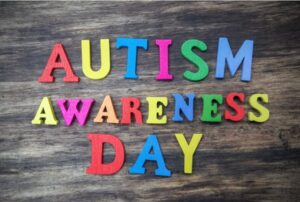Case Study : Lily is an 8-year-old girl who started showing signs of anxiety after a family car accident. After the accident, Lily experienced nightmares and repeatedly relived the scenes of the crash, unable to stop thinking about it during both the day and night. She began avoiding discussions about the accident at school and even refused to ride in cars. Lily also became easily angry, frequently lashing out at her parents and teachers, and she had trouble sleeping at night. After three weeks of these symptoms, her parents decided to take her to see a therapist.
When children or adolescents experience traumatic events like natural disasters, domestic violence, or major accidents, they may undergo emotional fluctuations or behavioral changes. This condition is referred to as post-traumatic stress reactions in psychology. Among these reactions, Acute Stress Disorder (ASD) and Post-Traumatic Stress Disorder (PTSD) are the most common types. While these two terms may sound similar, there are some important differences between them. Today, let’s talk about the differences between ASD and PTSD to help you better understand and recognize the challenges children may face.
1. What is Acute Stress Disorder (ASD)?
Acute Stress Disorder (ASD) typically occurs shortly after a traumatic event, usually within three days to four weeks. During this period, children may experience a variety of emotional and behavioral reactions. The most common symptoms include:
- Avoidance behaviors: Children may avoid talking about the traumatic event, avoid looking at anything related to the event, or even avoid people connected to it.
- Re-experiencing symptoms: These might include nightmares, flashbacks, or children exhibiting strong emotional reactions related to the traumatic event.
- Emotional instability: The child may experience extreme emotions, such as anxiety, fear, or anger.
- Hypervigilance: The child may become overly sensitive or easily irritated, reacting strongly to small noises or movements.
These symptoms usually don’t last long, and most children recover within a few weeks. However, if these symptoms persist for more than a month, they may develop into Post-Traumatic Stress Disorder (PTSD).
2. What is Post-Traumatic Stress Disorder (PTSD)?
Post-Traumatic Stress Disorder (PTSD) is diagnosed when symptoms persist for a longer period, beyond one month, and do not improve. In fact, PTSD symptoms may worsen over time, significantly impacting a child’s life. Compared to ASD, PTSD symptoms are more persistent and may have profound effects on a child’s academic, social, and family relationships. PTSD symptoms include:
- Persistent re-experiencing: The child might repeatedly relive the traumatic event or unconsciously “re-enact” the trauma, feeling as if they are experiencing it again either mentally or physically.
- Negative emotions: Children might feel numb to emotions, unable to experience joy, or may feel isolated from those around them.
- Avoidance behaviors: The avoidance of anything related to the trauma becomes even more pronounced, to the extent that the child may refuse to engage in any activity or situation connected to the event.
- Continued hypervigilance: Symptoms like trouble sleeping, irritability, exaggerated startle responses, and an inability to relax may continue. The child might feel constantly tense.
PTSD symptoms can persist for months or even years. If not addressed in a timely manner, these symptoms may develop into long-term psychological issues, affecting the child's adult life as well.
3. The Key Differences Between ASD and PTSD
Although ASD and PTSD share many similarities, there are several key differences between them:
- Onset: ASD occurs within three days to four weeks after a traumatic event, whereas PTSD lasts for over a month and can continue even longer.
- Duration of Symptoms: ASD symptoms are typically temporary, and most children recover within a few weeks; in contrast, PTSD symptoms are more persistent and require professional treatment.
- Severity of Impact: While ASD may affect a child's emotional state and behavior, it generally does not disrupt their social, academic, and daily functioning to the extent that PTSD does. PTSD tends to cause more severe, long-term distress and a significant decline in quality of life.
4. How to Recognize and Help Children
After understanding the differences between ASD and PTSD, parents or educators can better identify symptoms in children and take appropriate steps to help them. If your child has experienced a traumatic event and exhibits the following symptoms, you should pay close attention:
- Do they experience recurring nightmares or flashbacks?
- Are they displaying extreme anxiety or fear?
- Do they avoid anything related to the trauma?
- Are they feeling emotionally numb, unable to experience joy?
- Are they having sleep problems or signs of heightened vigilance?
If these symptoms persist for over a month and are affecting the child’s daily life and psychological state, it is advisable to seek professional help from a therapist. Early intervention is crucial for the child’s recovery. Treatment methods typically include:
- Cognitive Behavioral Therapy (CBT): A widely used therapy for PTSD, CBT helps children identify and modify negative thoughts and emotions, alleviating anxiety and trauma-related memories.
- Eye Movement Desensitization and Reprocessing (EMDR): This therapy helps children process traumatic experiences and reduces the emotional pain caused by traumatic memories.
- Supportive Therapy: Family and school support are also crucial in ensuring that the child feels understood and safe.
In the case of Lily, the therapist diagnosed her with Acute Stress Disorder (ASD) and developed a cognitive behavioral therapy plan. After a few weeks of treatment, Lily gradually learned how to manage her post-trauma emotions. Her nightmares decreased, and her anxiety improved. Nonetheless, her parents and teachers continued to closely monitor her to ensure she did not develop Post-Traumatic Stress Disorder (PTSD).
5. Conclusion
In summary, while Acute Stress Disorder (ASD) and Post-Traumatic Stress Disorder (PTSD) share many similarities, there are significant differences in the duration, severity, and treatment methods for each. Understanding these differences can help parents and educators identify issues early and provide timely support to children. When facing trauma, it is essential to offer children the care and understanding they need, ensuring they receive appropriate help so they can recover quickly and live healthy, happy lives.
References:
- American Psychological Association (APA). "Post-Traumatic Stress Disorder." APA.
- National Institute of Mental Health (NIMH). "Post-Traumatic Stress Disorder (PTSD)." NIMH.
- Mayo Clinic. "Acute Stress Disorder." Mayo Clinic.
- American Academy of Child and Adolescent Psychiatry (AACAP). "Post-Traumatic Stress Disorder (PTSD) in Children and Adolescents." AACAP.













